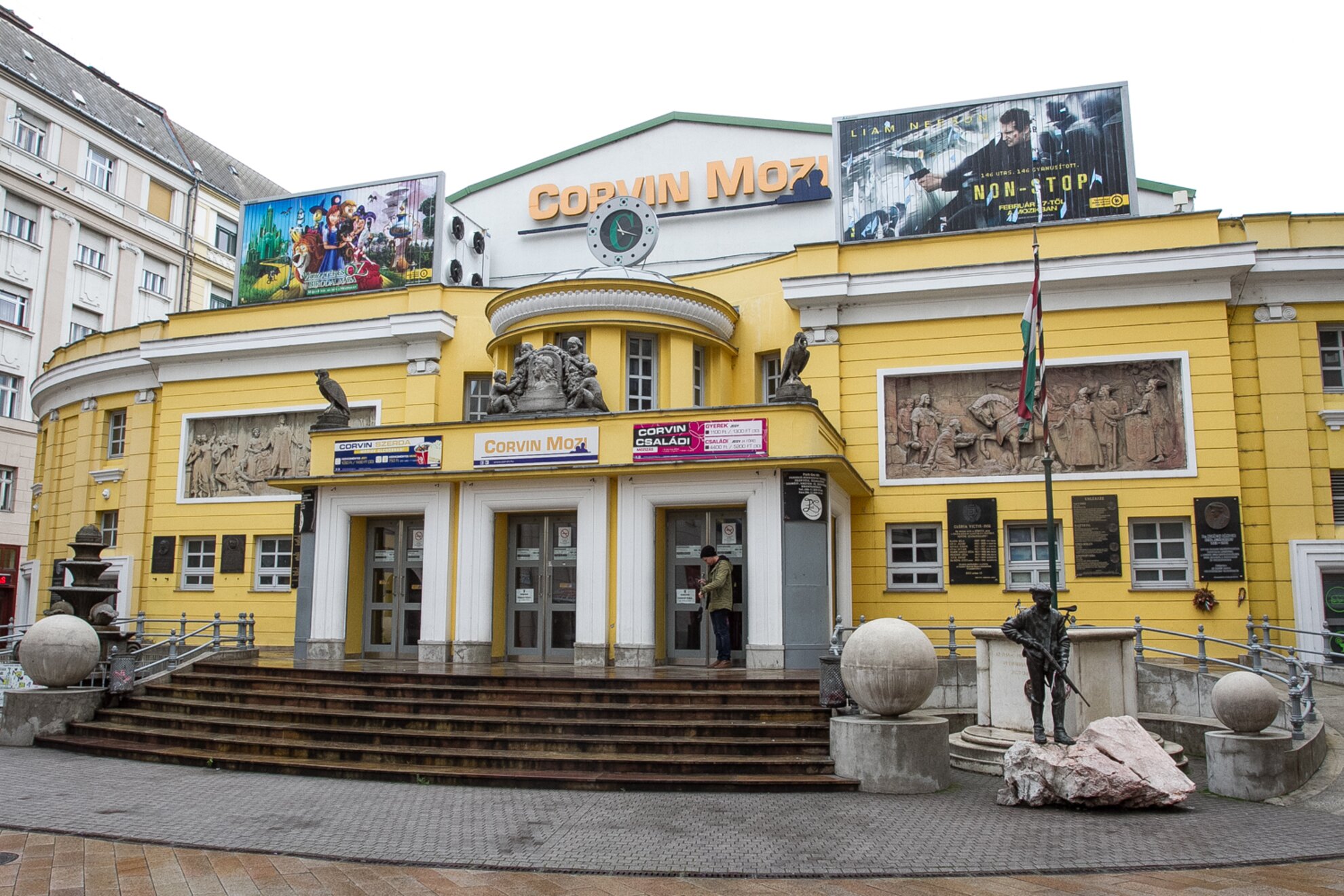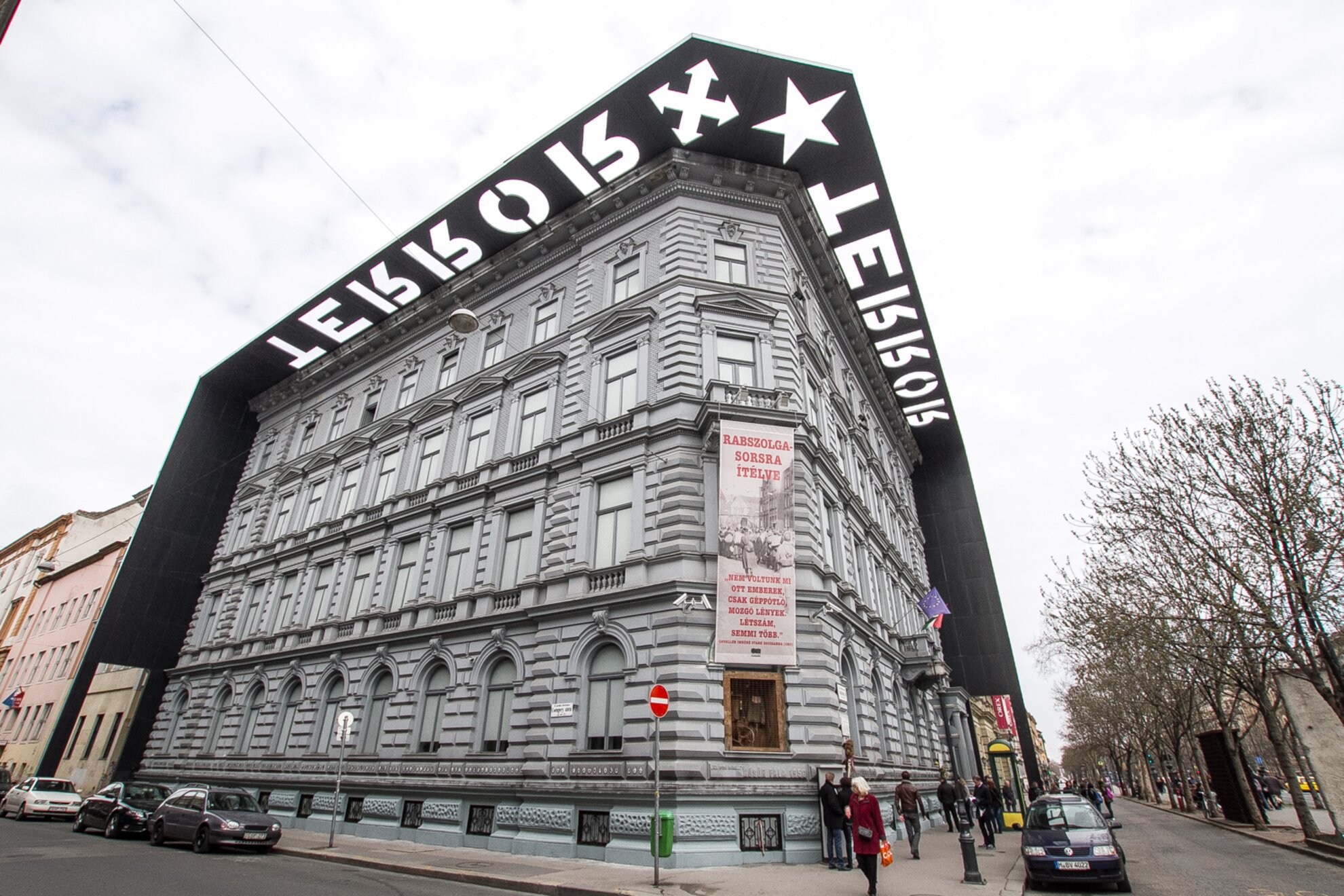Budapest’s Belle Époque Inspired by cities such as Paris and Vienna, at the turn of the 20th century Budapest was a city of optimism and opulence, which flowed on from the period of extensive construction in the mid-to-late 1800s. Pest’s downtown area around Andrássy Avenue and the V District are great spots to take a trip down architectural memory lane.
Heroes’ Square Millennium Monument commenced construction in 1896, with plans for it to be ready in time for the new century. It’s actually a Millennium Memorial - and not actually one that was built a century too early. Instead, the square was constructed to celebrate the 1000th anniversary of the Hungarian conquest of the Carpathian Basin, along with the foundation of the Hungarian state. The square’s memorial commenced construction in 1896, as part of a series of projects that included the Millennium underground. The main monument was completed in the early 1900s, but construction dragged on until 1929. The M1 was also continental Europe’s first underground.
Secessionism also captured the spirit of early 20th century Budapest. In 1901, Ödön Lechner’s green-roofed Postal Savings Bank (on Hold Street) opened its doors, complementing the neighbouring grand buildings of the V and VI Districts. In 1902, the new Hungarian Parliament building had its final touches added to it, while Széchenyi Bath in City Park opened its doors in 1913.
Sadly, this lush era of extravagant building and design came to an end with World War I.

After the First War and the Rise of BauhausFollowing World War I and the infamous Trianon Treaty, Hungary saw an influx of refugees from former territories that lay outside the new border. The housing shortage at the time pushed the government to build municipal housing around the city. The XIII District region of Újlipótváros grew into a residential area and, in the mid-1920s, Bauhaus became a popular style in the neighbourhood. The best Bauhaus examples can be found around St. Stephen’s Park and Pozsonyi Street.Budapest’s Yellow Star Houses and the Jewish Ghetto In 1944 German forces occupied Budapest and thousands of Jews were moved into approximately 2,000 designated “Yellow Star Houses” scattered around the city ahead of deportation to work and concentration camps. Some of these were destroyed, but most of these houses are still used as private residences. You can find out where these are at the Yellow Star House project.
The Jewish Quarter of the VII District has poignant reminders of this dark period of history, including the walled ghetto that was once here. If you take a walk on Király Street, look in at number 15, where you’ll see a memorial wall built from the original stones of the ghetto walls to commemorate the victims of the Holocaust. At number 32 Dohány Street you can also find a relatively new Holocaust memorial, which is worth stopping by.
Another somber reminder is the shoes along the Danube memorial, where iron shoes commemorate the Jews shot beside the river by Arrow Cross militiamen in 1944-45. This memorial is on the Pest-side banks of the Danube near the Hungarian Parliament.

The Siege of BudapestIn 1944, the Red Army began its offensive, and months after the Siege of Budapest began, the city lay in ruins.
The bombing and shelling of the city pushed its surviving population into the cellars and tunnels throughout the city.The caves running under Buda Castle Hill became a shelter, but nowhere is the feeling of the siege captured better today than at the Hospital in the Rock. The hospital saw terrible, dank conditions where the wounded lay stacked in the narrow corridors and supplies ran short. The facility was designed to cater to 70 patients at most, but at one time the hospital was treating 600 wounded! The poignant exhibition that you can visit in the Buda Castle District captures the terrible environment of the time, as well as the suffering Budapest endured in the mid-20th century.

The Early Days of CommunismOnce World War II was over, in 1949 Hungary became a People’s Republic, with a Communist government and Socialism as the goal. The iconic red trolley busses, whose descendants we can still see today mostly driving around the narrow streets of the VI and VII districts, began operation on Stalin’s 70th birthday in 1949. They are numbered from 70 in honour of the former Soviet dictator.
The Liberty Monument atop Gellért Hill dates back to 1947, erected in remembrance of the Soviet liberation of Hungary during World War II. The 14 meter statue of a woman towers over the city, she is holding a palm leaf high above her head as a symbol of peace. It’s one of the few public communist sculptures that didn't get shelved to Memento Park after the end of Communism in Hungary.

The 1956 RevolutionThe 1956 revolution against Soviet occupation is an important event in the history of Budapest, but also of the whole region.
You could see the Magyar Radio building in the VIII District, which was the scene of violent clashes; or you could head to another focal point of the revolution, Corvin Quarter, where there is a memorial for the freedom fighters of the revolution. Still today, elsewhere, you can see bullet holes peppering the facades of buildings as you walk through the streets of Budapest.

The House of Terror on Andrássy Avenue pays tribute to the victims of the various terror regimes of the 20th century, including those who suffered under the communist regime. It is believed that thousands were tortured here.
The Fiumei Rd Cemetery is also worth visiting where you can walk through the National Burial Garden and stop at the special area dedicated to the fallen freedom fighters of the 1956 uprising.

Relics of CommunismFrom the 1960s and through the 1980s wartime damage was reconstructed. For example, in the the 1960s the Elizabeth Bridge was rebuilt, having been blown up by the German army decades earlier. Metro lines 2 and 3 were also completed during this period.
For communist relics, Memento Park is Budapest’s most iconic site. The park, located outside the city centre in the suburbs of Buda, is where you can see monumental statues from Hungary’s communist past. You’ll find statues of Lenin, Marx and Engels. These statues were once prominent in the city, but after the fall of Communism in 1989, these were promptly removed and clustered together at this open-air museum, which opened in the early 1990s. Here you can also sit in a Trabant car - another icon of the communist period, which - if you're lucky - you can sometimes see on the roads in Budapest too.

For a glimpse at daily life during the communist years, you could head to a "Presszo," tiny coffee shops embodying everything that is nostalgic about communist tat. These often come complete with red vinyl chairs, fake marble flooring and simple coffee. Today, you can still visit iconic Presszos such as Bambi Eszpresszó in the II District and Táskarádió Eszpresszó in the V District to get a feel for this period.

Post-Communist BudapestIn 1989, Hungary became a republic and started to shake off its communist past. In the 90s shopping malls popped up around the city like the Polus Center, Duna Plaza and WestEnd City Centre. In the early 2000s, the first ruin pub Szimpla Kert opened, which would eventually usher in a new period of cool in Budapest and along the way help to transform the dilapidated VII District into the hip hangout it is today.
Of course, marks of the 20th century can be seen and felt at numerous other spots throughout the city - practically every street corner exposes new and interesting ways to explore the past. But Budapest has also undergone a huge renewal and rebirth, which can also be felt as you get around.




